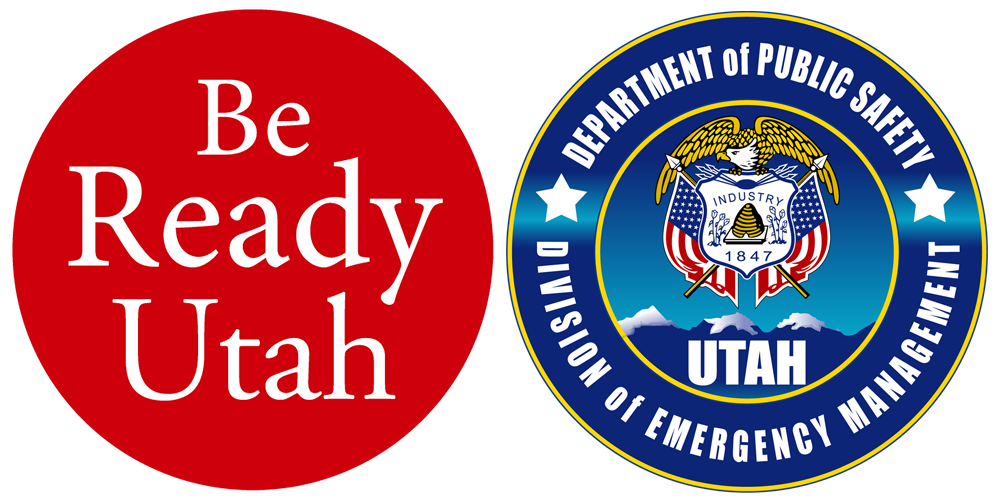
Water
The Point
Water is necessary for life and survival. You are 60 to 70 percent water. It’s necessary for all bodily functions.
If you are thirsty, you're already dehydrated.
You can only last three to four days without it. Having a storage of clean drinking water and knowing how to safely treat more is vital to "be ready" for survival.
Do This
- Store a MINIMUM of 1 gallon of clean drinking water per person per day.
- Store a MINIMUM 2 week supply (14 gallons each) for you and your family.
- Gather and store water treatment supplies in your disaster supply kits and at home supplies.
- Secure your water heater with earthquake water heater straps.
- Store more water as space, budget, and ability allow.
- BONUS: Store a full month of water for your entire household.
- BONUS: Practice using only your stored water for two or three days. See if you can live on only one gallon of water per person per day.
- BONUS: Learn how to conserve water in an emergency by practicing things like washing dishes and laundry by hand.
VIDEOS
- PSA: Talk About Water Storage
- The Be Ready Buzz: Pre Bottled Water
- The Be Ready Buzz: One Gallon of Water Per Day
- The Be Ready Buzz: Two Liter Bottle Water Storage
- PrepCast: Importance of Water
- PrepCast: Water Storage
- PrepCast: Water Treatment
- Webinar: Water Storage and Treatment
- 20 to Ready: Water Filter
- 20 to Ready: Purify Water
- 20 to Ready: Got Water?
- 20 to Ready: Water Storage
- 20 to Ready: Got More Water?
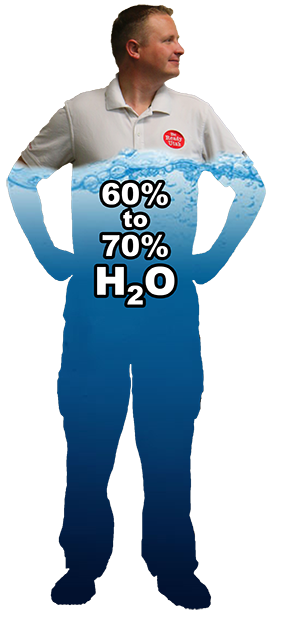 How Much Water Do We Need?
How Much Water Do We Need?
Our bodies are 60 to 70 percent water. It is necessary for all bodily functions. You can only last three to four days without it. If we are thirsty, we are already dehydrated. The best indicator of how much water we need is our urine. If it is clear and plentiful, we are probably hydrated. If it has color or we don’t “go” very often, we are dehydrated.
Store a MINIMUM of one gallon per person per day, a half gallon for drinking and a half gallon for food preparation and sanitation. You will need more at high altitudes or in dry climates. Children, elderly, sick, nursing mothers, or those who are physically exerting themselves will also need more. Store a BARE MINIMUM of two week’s supply for your family, but it is recommended to store a supply of one month or more.
Water Storage
There are a few things that negatively affect your water storage. Whenever you are storing something for long term, the ideal conditions are cool, dark, and dry at temperatures between 40 and 60 degrees. Contamination also affects your storage.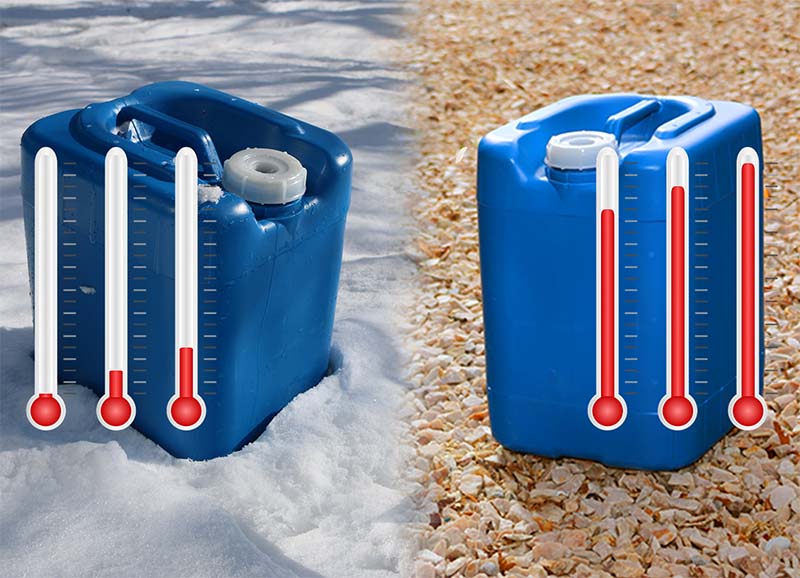
- Light from the sun, and even artificial light, breaks down the integrity of water containers, causing them to become brittle or leak. Standard 55 gallon blue water barrels in direct sunlight can start to fall apart within five years.
Light also causes algae to grow. Limit sunlight, or even any light, as much as possible in water storage areas. Sunlight, via photosynthesis, causes algae to grow in stored water. It doesn’t pose a health risk, but it’s not fun to chew your drinking water. - Temperature extremes promote bacteria and algae growth. Just like sunlight, warm storage temperatures can promote bacteria and algae growth in water. Limit extremes in temperatures in storage areas as much as possible. Cycles of freezing and thawing can loosen seals or even break storage containers.
- Moisture buildup on and around the outside of your storage container can promote mold growth which will produce toxins that can pass through container walls into your water. Keep the outside of containers dry and off the ground, and clean up any spills from filling.
-
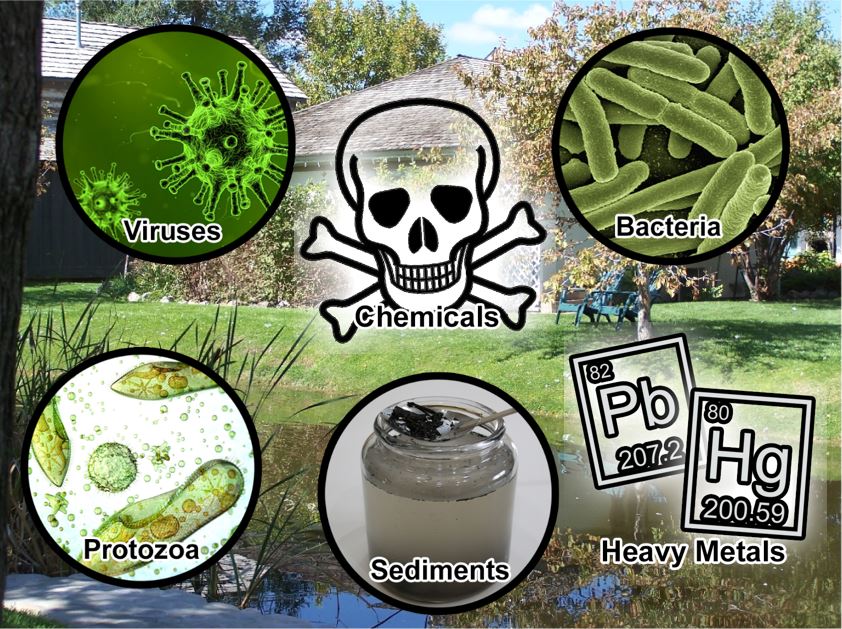
Contamination in Water
Contamination can come from getting your water from a NON-municipal source like lakes, streams, springs, or even well water. Generally speaking, municipal water is safe and ready for long-term water storage. There are a LOT of potential contaminants in NON-municipal water. Treat it BEFORE using or storing it.
-
Contamination can also come from unclean storage containers and unclean filling practices. Be sure to clean containers thoroughly and do not use containers that originally held unsafe chemicals or other substances. Be sure that hoses, lids, seals, and hands are all clean when filling storage containers.
-
Water can be contaminated with organisms such as protozoa (about 3 microns in size or more) like Cryptosporidium and Giardia.
-
It can also be contaminated with smaller bacteria (0.4 microns in diameter and up) like E.coli, Salmonella, and Cholera.
-
Smaller still are viruses (about 0.01 microns) like Rotavirus, Hepatitis A and E. Dangerous viruses are generally not found in North American water systems.
-
Contamination can also be from chemicals and heavy metals. Some of it is naturally occurring in water, and some can come from industrial or agricultural runoff.
-
Finally, sediment contamination (dirt, sand, organic matter) can be stirred up from the movement of the water or by disturbing the bottom of streams or other outdoor water sources.
-
Water Storage Containers
There’s a lot of different things that people use to store water. Some better than others.
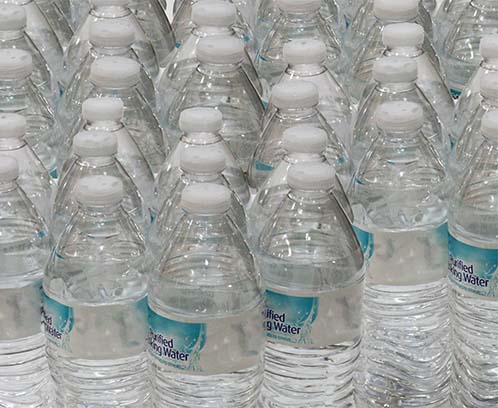
Commercially Bottled Water
- Commercially bottled water is a popular option for water storage. It is convenient, ready to go right from the package, and is a good size for carrying. Bottled water has a recommended two to three year shelf life. Not the water, but the bottle itself is designed to start breaking down after a number of years. Make sure you rotate and use your stores. It is convenient to use, but is also a less effective use of space compared to larger containers. If you are limited in your available storage space, don't put all of your water storage in water bottles. Additionally, even though the cost per bottle is not extravagant, it is more expensive than municipal water from your tap at pennies per gallon. Also know that a lot of commercially bottled water IS just bottled tap water.
- Pre-used containers can be an inexpensive and easily accessible means of storing water if other options are difficult to come by. Larger food grade containers can sometimes be obtained from restaurants or other food preparation locations inexpensively. Take care as to which containers you choose because residual food deposits in the container may be difficult to remove. If left behind, they can promote bacterial growth in your stored water. Also, remember that your water will probably taste like whatever was in the container previously. Reconsider using containers with strong odors. You will never be able to remove them from the container.
A great option for water storage are two and three liter plastic soda pop bottles. They are durable and air tight, perfect for long-term water storage. Just make sure they are completely cleaned and rinsed before filling.- Thoroughly wash and clean pre-used food safe containers with a ratio mixture of one teaspoon of unscented, non-colored bleach to a quart of water. Swish it around, making sure the cleaning solution contacts all interior surfaces. Let it sit for at least 30 minutes before emptying it and rinsing with fresh, clean water. Then fill. If you use soapy water to clean the container, be sure to completely rinse out all residual soap to prevent a soapy taste in your water.
- DO NOT use containers which held chemicals or other dangerous substances. You can NEVER make it clean enough to be safe for drinking water. Some like to use these containers to store water for cleaning and sanitation purposes. That’s OK, just label them as such. If you are limited on storage space, just store drinkable water.

- DO NOT use milk jugs to store water. They quickly break down and become brittle.
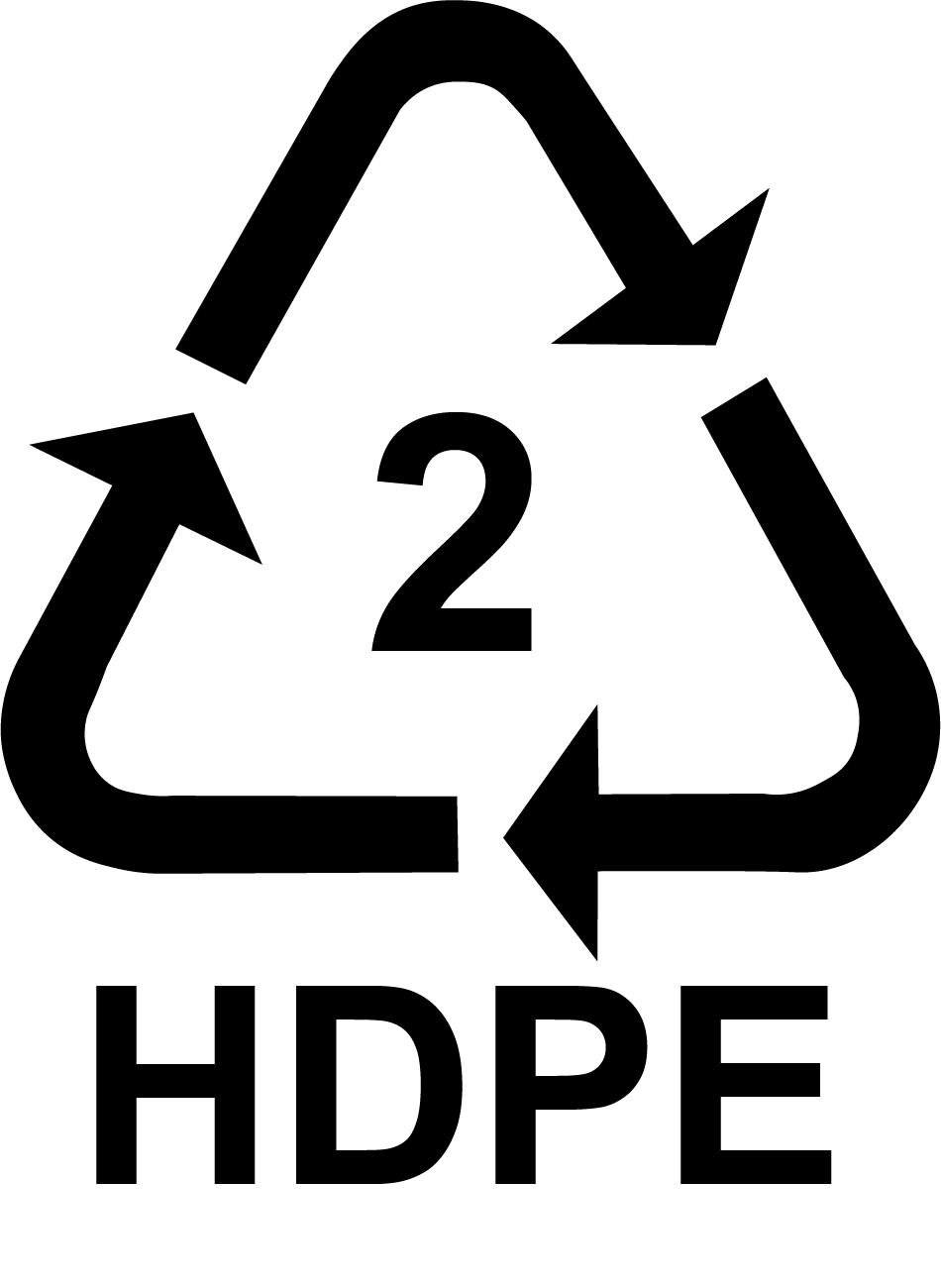
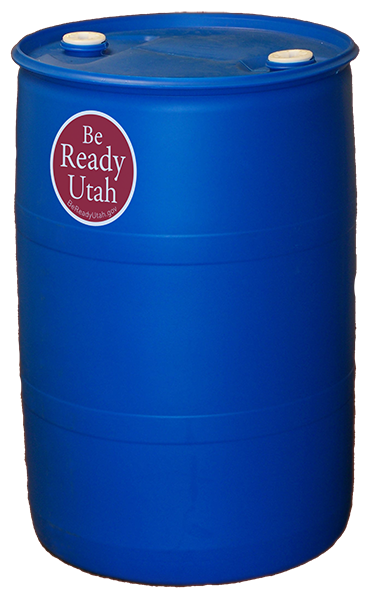 Food grade plastic containers made from a High Density Polyethylene (HDPE) are the standard and recommended way to store water for the long term. Look for the "2" in the recycling triangle. They are affordable and easy to find in your local preparedness store and also in many grocery stores. They are light weight when empty and very durable. An empty 55 gallon barrel weighs about 25 pounds when empty and about 480 pounds when full. An empty 250 gallon water tank weighs around 80 pounds and over 2000 pounds when full. Get dark, solid colors to block light from reaching your water.
Food grade plastic containers made from a High Density Polyethylene (HDPE) are the standard and recommended way to store water for the long term. Look for the "2" in the recycling triangle. They are affordable and easy to find in your local preparedness store and also in many grocery stores. They are light weight when empty and very durable. An empty 55 gallon barrel weighs about 25 pounds when empty and about 480 pounds when full. An empty 250 gallon water tank weighs around 80 pounds and over 2000 pounds when full. Get dark, solid colors to block light from reaching your water.
Phthalate is an unsafe chemical that comes from some plastics. Polyethylene water and food storage containers are specifically designed for safe, long term use with food and water. If there is any kind of leaching into the water from the container itself, it is miniscule and cannot harm you. - Glass containers are not as permeable as plastic and leave no taste or odor in the stored water, BUT because glass is easily broken and the broken shards are dangerous, glass is not recommended for water storage. If you choose to fill empty canning jars with drinkable water, store them on bottom shelves.
- Metal containers are heavier than plastic and can leave metallic taste in stored water. There is also a possibility of rust unless you use a stainless steel container. Stainless steel water bottles are popular, but are not intended for long-term water storage. Metal containers are not recommended for water storage.
Filling Considerations
There are some things you want to consider and plan for before you fill your water storage containers.
- Use a drinking water hose, also known as an RV or boat hose, instead of your garden hose. At worst, even brand new garden hoses can add contaminants to your water. At best, garden hoses give your water a rubbery taste. Many of us still drink from the garden hose, but that water isn't going into storage where the contaminants can grow over time.
- Don’t “re-treat” municipal water. Municipal water is already treated and is ready for long term storage. More chemicals or treatment is unnecessary. Many commercial treatments or "stabilizers" are the same treatments done at the water treatment plant before it's piped to your home. Save your money and put it towards a good water filter.
- Fill your container to the top to get out as much air as possible and to keep gaskets and seals moist to maintain a tight seal.
- Treat well or other ground water before storage. Depending on the emergency, you may not have time or ability to treat the water. Make it safe for use before storing it. Even if ground water is already safe, it probably has contaminants in it that will grow and multiply if put into long term storage.
Storage Considerations
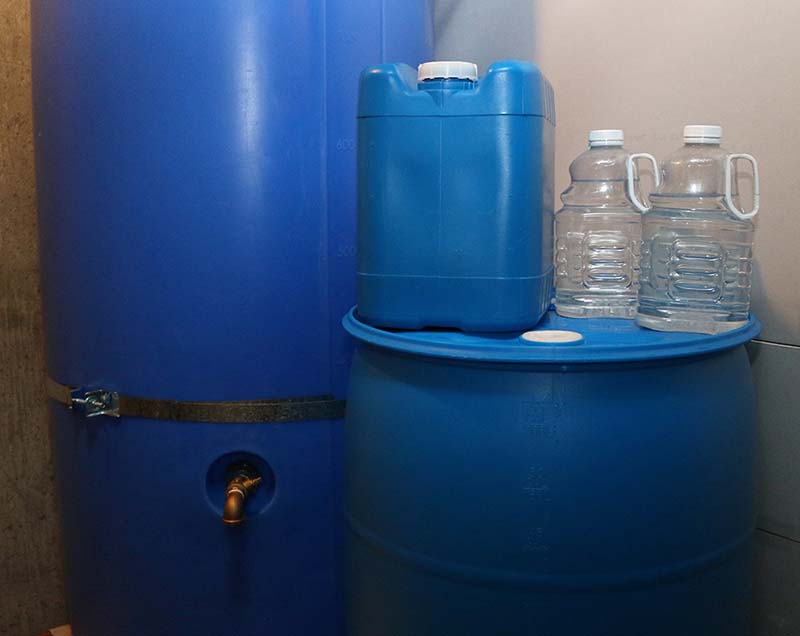 There are some things you want to think about when considering WHERE and HOW you are going to store your emergency supply of water. In all of emergency preparedness, there is ideal and then there is what we can really do. Budget, time, storage space, and many other factors determine how close we can get to ideal. Don’t get discouraged and don’t give up. Do what you can with what you have. Adapt to your circumstances, needs, and abilities and set a goal to upgrade as you can. Something is always better than nothing.
There are some things you want to think about when considering WHERE and HOW you are going to store your emergency supply of water. In all of emergency preparedness, there is ideal and then there is what we can really do. Budget, time, storage space, and many other factors determine how close we can get to ideal. Don’t get discouraged and don’t give up. Do what you can with what you have. Adapt to your circumstances, needs, and abilities and set a goal to upgrade as you can. Something is always better than nothing.
- Keep it cool, dark, and dry. As mentioned before, an ideal storage location would be in constant temperatures between 40 and 60 degrees without sunlight in a room without windows or the windows blacked out, and low humidity. This prevents contaminating organism growth and container breaking or leaking.
- Vary container sizes. Large containers are the most efficient use of your space but are difficult to move. Store water in smaller containers as well that are able to be carried to kitchens or restrooms where water is needed. When empty, siphon from the larger containers.
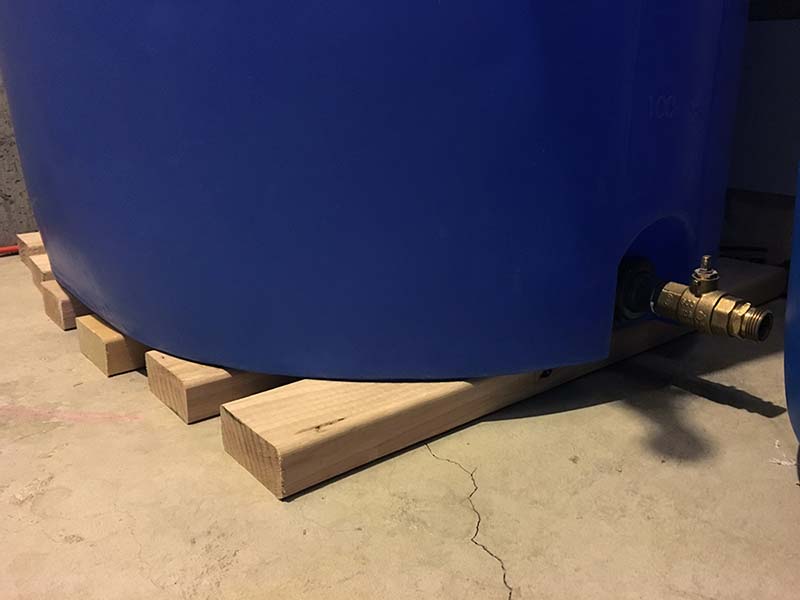
Don't store water directly on concrete.
- Do not store directly on the concrete. Put on a pallet, 2x4s or something to allow air to circulate under and around the container. Water condensation or spills will promote microbial growth which create toxic gases. Elevating the container off the ground allows the moisture to evaporate. Concrete also emits toxic gases. Elevation allows the gases to dissipate rather than be trapped underneath to eventually be absorbed.
- Think about emptying and refilling before filling. Full water barrels and tanks weigh hundreds if not thousands of pounds. Once it’s full, it’s not moving. Find a place that makes it easy to empty and fill your containers.
- Check yearly. Check for odd smells, discoloration, contamination, and leaks. Replace if necessary. Be careful not to introduce contamination when checking for contamination.
- Rotation. Some say to rotate your water every 6 months. Utah State University Extension states, "When potable water (drinkable water) is properly disinfected and stored, it should have an indefinite shelf life."
- Multiple storage locations. As the old saying goes, don’t keep all your eggs in one basket. Store water in more than one location because if one area is lost or damaged in an emergency, you have more elsewhere.
Ideal Water Storage Locations: Indoors in a basement or food storage room.
OK Water Storage Locations: Garage, storage shed, and under sinks. Rotate every one to two years. Beware of proximity to possible chemical contaminants and odors that could seep through the plastic wall of the storage container.

Outside Water Storage
Last Resort Water Storage Locations: Outside. Store on the north side of the house or another outbuilding and cover with a heavy tarp to help prevent sunlight from reaching the containers and to protect from other contaminants deposited by wind, rain, and animals. Rotate at least every 6 months in spring and fall. Don’t fill to the top, leave a little room for expansion from possible freezing and heating. Replace containers every 5 to 10 years. Remember to NOT store it directly on the ground.
Other Sources of Water
Click Here

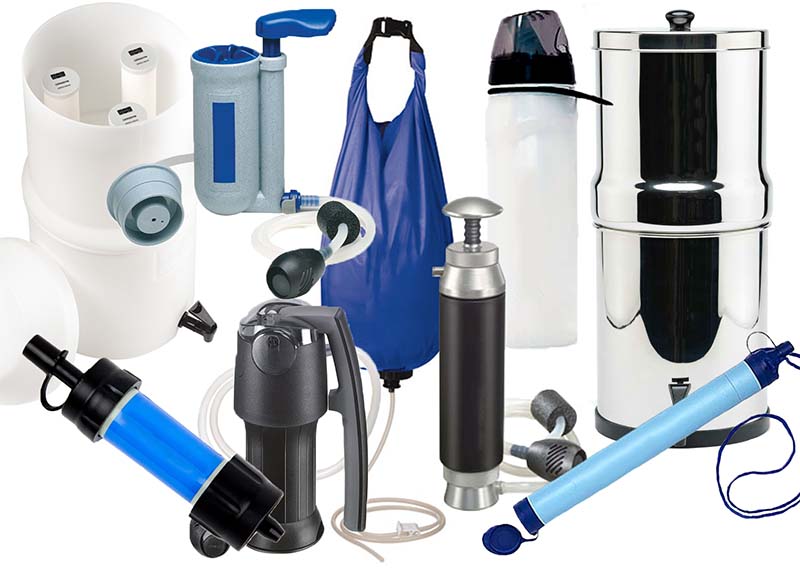
Disaster Supply Kit: Water
Click Here

